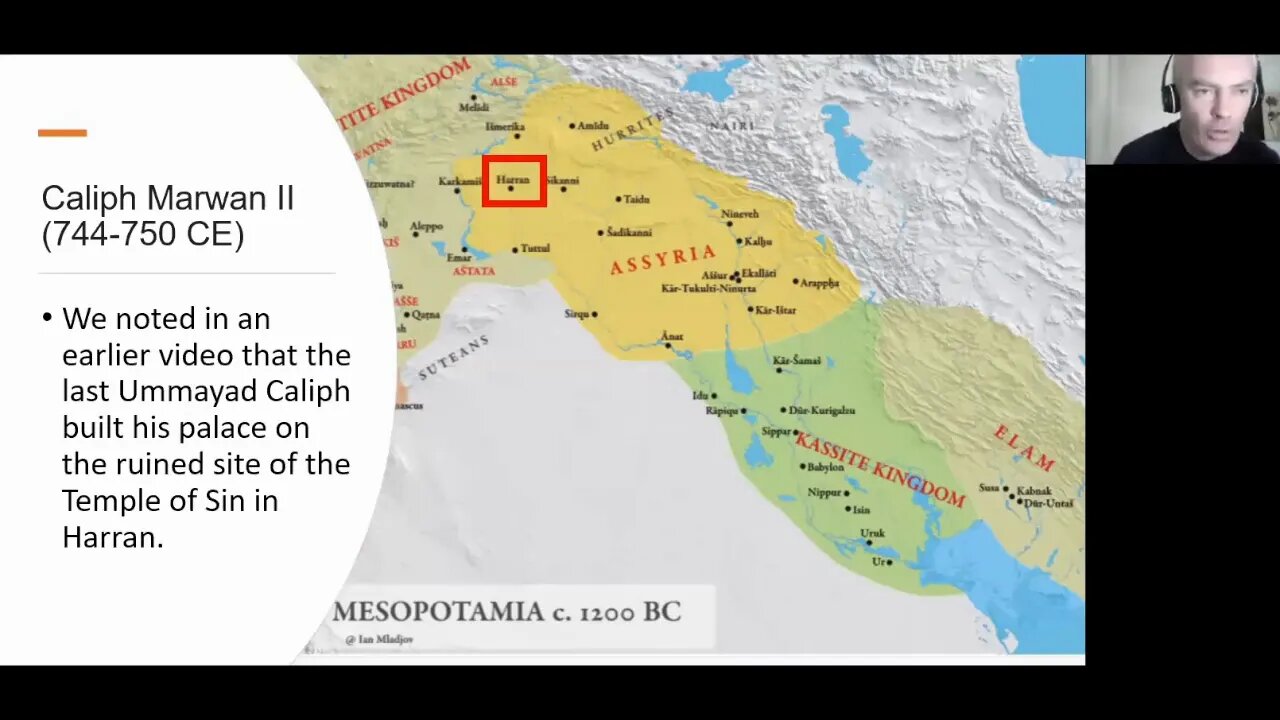Premium Only Content

The man who brought the RAMADAN FAST to Arabia
I have come up with yet another source for the '5 pillars' of Islam. The Islamic Traditions tell us it was initiated by Muhammad, in Mecca, in the early 7th century. Yet, we can't find anything that early nor that far south for the Ramadan Fast, the 4th of the 5 pillars.
What I have found is that this fast was practiced much further north, in the city of Harran, which is in the southern part of the country we now call Turkey. It was propagated in Babylon and Arabia by king Nabonidus, whose son was condemned by God with the dire warning known as the writing on the wall that foretold the end of the Babylonian kingdom.
My level of confidence for this finding is within the 5th level of 5 levels, so the strongest support needed.
The Abbasids first ruled up in Harran before they moved their capital down first to Kufa, and then to Baghdad, in Iraq. Harran had a very hot climate, so they worked at night and thus worshiped the Moon (known as SIN, or Nanna).
The moon's mythical disappearance into the Pleiades created a custom by the Harranians of fasting and praying for the moon to return, and then feasting when it would reappear (which they called the feat of 'Al-Feter'). Notice how that name is similar to the same feast used by Islam today to celebrate the breaking of the fast: 'Eid al-Fitr'?
Interestingly, the 'Takbir' "Allahu Akbar" is also borrowed from the Takbirs used by the Harranians to their moon god.
Praying 5 times a day is also borrowed from the Sabians (or Mandains) who were from this same area.
The Wilderness of SIN (or the Desert of SIN) is located between Elim and the Sinai, which is to the West of Petra, proving that this area of Sin did exist much earlier, and much further north.
An Inscription written in Cuneiform, on a Stele, referred to as the 'Harran Inscription', is dated to the time of Nabonidus (mid 6th century BC), and refers to the Moon god 'Sin'.
Conclusions:
1) Islam has co-opted their 30-day fast (Ramadan) and their subsequent festival (Eid al fitr) from a pagan fast and festival which was created in Southern Turkey.
2) Every part of the fast references the Harranian moon god, Sin.
3) Ramadan begins and ends based on the lunar (moon) sightings, just like they did in Harran.
4) Fasting occurs when the moon is not visible (i.e. during the day), thus the fasting follows the same pattern as that in Harran.
5) The current call by Muslims of 'Allahu Akbar' (god is the greater) also comes from the context of Harran, where, due to the pantheon of gods in the area, they called 'Sin' the greater god.
It seems that the fast, the festival, the lunar sightings, and even the Islamic call are all based on the Harranian model which is much earlier and much further north...yet again...
Sneaker's Corner is jointly run by Mel and Murad. We also work in collaboration with Bala. Our theories are liable to be updated in light of new information, so please them as our considered view in light of waht we currently know. We support freedom of expression, however, spamming in the comment section is not welcome. Please take the time to compose your own view. Copy and pastes will likely be automatically send to the spam folder. We will give 1 warning regarding spamming, so please avoid it. Thanks!
To support us on Patreon: https://www.patreon.com/sneakerscorner
Follow on Twitter: https://twitter.com/Politico_view
-
 1:06:50
1:06:50
Origins
1 year agoRobert Spencer: A Historical Critique of Islam
4682 -
 10:17
10:17
Dermatologist Dr. Dustin Portela
1 day ago $7.81 earnedOlay Cleansing Melts: Dermatologist's Honest Review
53.6K1 -
 1:02:20
1:02:20
Trumpet Daily
2 days ago $26.68 earnedObama’s Fake World Comes Crashing Down - Trumpet Daily | Dec. 20, 2024
35.1K35 -
 6:29
6:29
BIG NEM
22 hours agoCultivating God Mode: Ancient Taoist NoFap Practices
30.5K6 -
 30:53
30:53
Uncommon Sense In Current Times
1 day ago $7.99 earned"Pardon or Peril? How Biden’s Clemency Actions Could Backfire"
50.6K4 -
 40:01
40:01
CarlCrusher
20 hours agoSkinwalker Encounters in the Haunted Canyons of Magic Mesa - ep 4
47K2 -
 59:44
59:44
PMG
1 day ago $5.74 earned"BETRAYAL - Johnson's New Spending Bill EXPANDS COVID Plandemic Powers"
54.9K21 -
 6:48:50
6:48:50
Akademiks
18 hours agoKendrick Lamar and SZA disses Drake and BIG AK? HOLD UP! Diddy, Durk, JayZ update. Travis Hunter RUN
176K30 -
 11:45:14
11:45:14
Right Side Broadcasting Network
9 days agoLIVE REPLAY: TPUSA's America Fest Conference: Day Three - 12/21/24
360K28 -
 12:19
12:19
Tundra Tactical
18 hours ago $13.18 earnedDaniel Penny Beats Charges in NYC Subway Killing
74.5K14